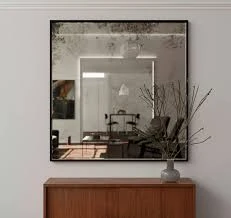

The Fascinating World of Reflective Glass Sheets
In the realm of modern architecture and design, reflective glass sheets have become a cornerstone of aesthetic innovation and functional utility. These remarkable materials are not only visually striking but also offer numerous advantages in energy efficiency and comfort. Reflective glass sheets are essentially glass panels that have been coated with a thin layer of metallic or non-metallic materials, giving them the ability to reflect light while allowing a portion of it to pass through. This article delves into the characteristics, applications, and benefits of these versatile materials.
Characteristics of Reflective Glass Sheets
One of the defining features of reflective glass sheets is their ability to manipulate light. They reflect excess sunlight, reducing glare and heat buildup within structures. The reflective coating can range in color from silver to bronze, creating a variety of aesthetic options that can complement any architectural style. Moreover, the degree of reflectivity can be customized according to specific needs, providing architects and designers with a wide array of choices to suit their visions.
These glass sheets also come in various thicknesses and can be treated for increased durability. This makes them suitable for both residential and commercial applications. The reflective surface not only enhances visual appeal but also plays a vital role in thermal regulation, making buildings more energy efficient.
Applications in Architecture
Reflective glass sheets have numerous applications in architecture. They are predominantly used in facades of skyscrapers and commercial buildings, providing a sleek and modern appearance while helping to control indoor temperatures. By reflecting a significant portion of solar radiation, these glass panels reduce the need for artificial cooling, which is particularly advantageous in warm climates.
In addition to exterior uses, reflective glass sheets are increasingly being incorporated into interior design. For example, using reflective glass as a feature wall can create an illusion of space and light, making rooms feel larger and more open. In residential settings, reflective surfaces can enhance the aesthetic appeal of homes, all while providing privacy from the outside.

Environmental Benefits
The environmental advantages of reflective glass sheets cannot be overlooked. By optimizing natural light while minimizing heat gain, these materials contribute to reduced energy consumption. Buildings that employ reflective glass can realize lower heating and cooling costs, which not only benefits the building’s occupants but also contributes to a decrease in overall energy demand.
Furthermore, many reflective glass products are designed to be eco-friendly. Some manufacturers offer glass options that are made with sustainable processes and materials, ensuring that the environmental impact is minimized throughout the lifecycle of the product.
Challenges and Considerations
While reflective glass sheets offer numerous benefits, they also present certain challenges. One of the primary concerns is the potential for distortion and glare. In some cases, the intense reflection can cause discomfort to individuals both inside and outside the building. Architects and designers must carefully consider the orientation and placement of reflective glass to mitigate these effects.
Another aspect to consider is the cost. High-quality reflective glass can be more expensive than standard glazing options. However, when evaluating the long-term energy savings and aesthetic benefits, the initial investment can often be justified.
Conclusion
Reflective glass sheets represent a harmonious blend of beauty and functionality in contemporary design. Their ability to control light and temperature makes them invaluable in both commercial and residential settings. As architects continue to innovate and push the boundaries of design, reflective glass will undoubtedly remain an essential material in crafting sustainable and visually stunning environments. With an increasing focus on energy efficiency and environmental mindfulness, the future of reflective glass sheets looks promising, poised to play a significant role in the evolution of our built environment.